portrait of leonardo
Born in 1452, Leonardo died in 1519 at the age of 67. Active in Florence, Italy, he was a representative artist of the Renaissance period.
Incidentally, the name "da Vinci" is not actually his surname, since it means only "of the village of Vinci," where Leonardo was born and raised. Therefore, in this article, we will refer to him as "Leonardo," which is an abbreviation.
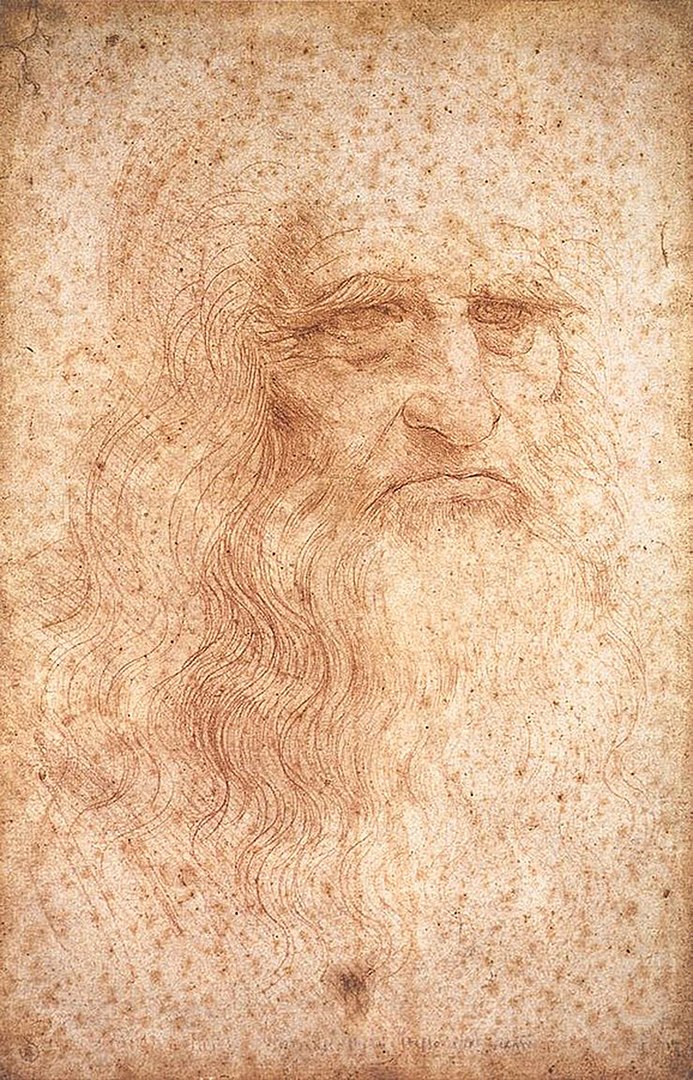
Leonardo da Vinci - presumed self-portrait
Leonardo is often called the greatest genius in human history. He worked in a wide variety of fields: painting, natural history, astrologer, mirror writing, music, architecture, cooking, aesthetics, mathematics, geometry, accounting, physiology, histology, anatomy, art anatomy, human anatomy, animal anatomy, plant anatomy, natural history, zoology, botany, mineralogy, astronomy, meteorology, geology, geography, physics, chemistry, opticsmechanics, engineering, fluid mechanics, hydraulics, aerodynamics, flight dynamics, airplane stability, aerodynamics, aeronautical engineering, automotive engineering, materials engineering, civil engineering, military engineering, diving suits, and countless other fields in which he is credited with major achievements and manuscripts. Some of his works have not been fully elucidated, and it seems that even in the 21st century, some of his works are still considered illusory.
Let us now look at some of his representative works, tracing his life in chronological order.
Leonardo's Childhood
Little is known about Leonardo's childhood; he was born in 1452 in a hamlet on the outskirts of the Tuscan city of Vinci.
Although he did not go to school, his grandparents taught him Italian, and the children of Vinci, who also attended a Latin school, taught him Latin, mathematics, geometry, and painting. However, he was practically self-taught in all his studies. It is said that he spent his childhood in the fields and valleys, sometimes tending horses and sketching in the village stable.
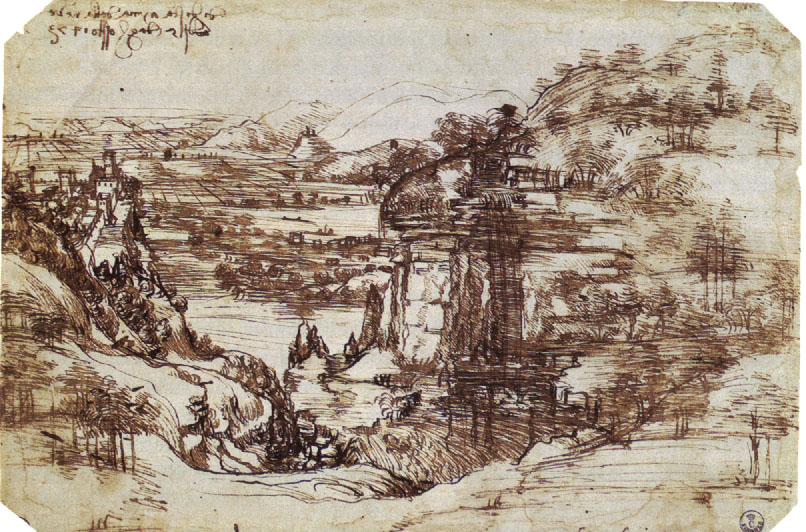
Leonardo's earliest drawings|Uffizi Gallery, Florence
Verrocchio's Workshop Period|1466-1476
In 1466, at the age of 14, Leonardo apprenticed himself to the artist Verrocchio, who presided over one of the finest workshops in Florence. It was at this workshop that Leonardo demonstrated his remarkable talent, both theoretically and technically. Leonardo's interests were not limited to the arts, but included design, chemistry, metallurgy, metalworking, leatherworking, mechanics, woodworking, and many other fields.
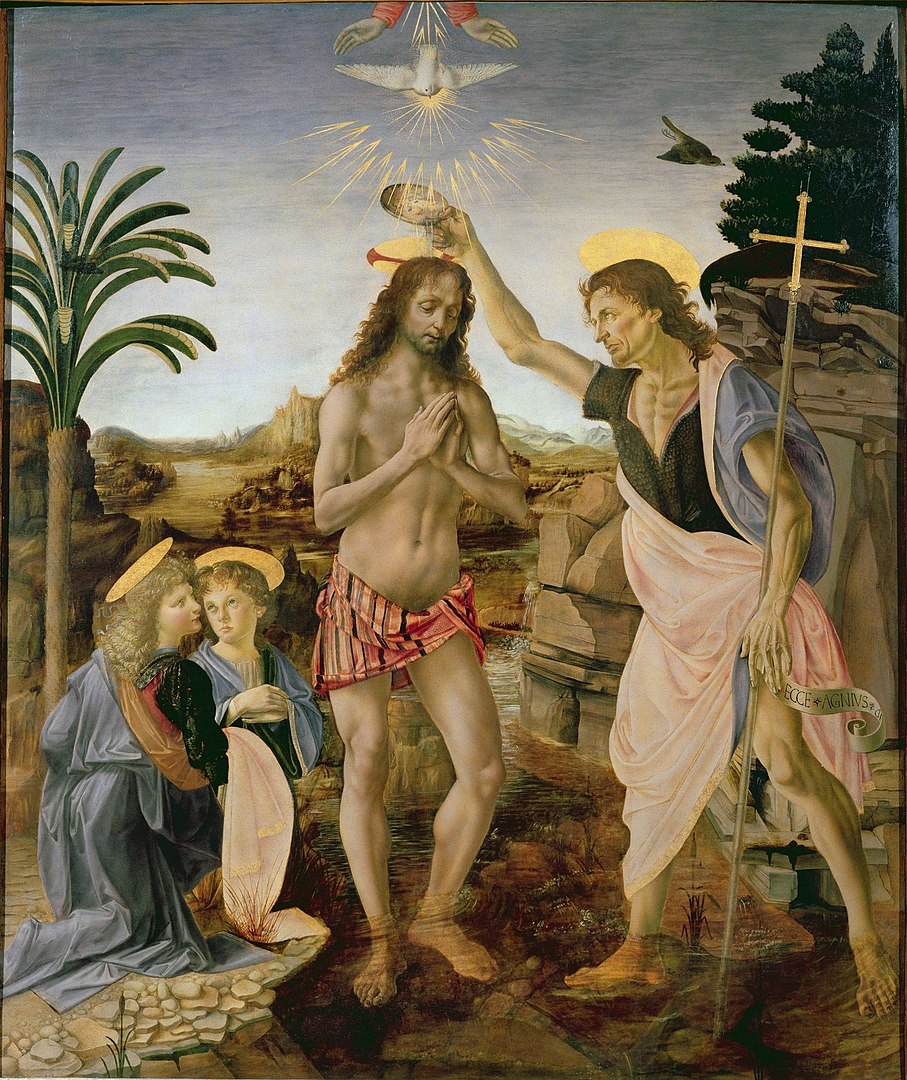
Verrocchio and Leonardo, Baptism of Christ, 1472-1475, Uffizi Gallery, Florence
This work is said to be a collaboration between Verrocchio and Leonardo, with Leonardo's part being the young angel holding Christ's robe as an offering. It is said that the master Verrocchio never painted again because his pupil Leonardo's skill was so outstanding.
The Baptism of Christ was painted in tempera and then added in oil, a new technique at the time, and modern analysis suggests that Leonardo also painted the landscape, the rocks, and most of Christ.
By 1472, when Leonardo was 20 years old, he had received his master's degree from the Congregation of St. Luke. He became known as a craftsman of outstanding skill.
Period of Maturity|1476 - 1513
In January 1478, Leonardo received his first commission for an independent painting. Later, he was also commissioned by the monks of San Donato Scopeto to create "The Adoration of the Three Eastern Doctors. However, both commissions were interrupted and unfinished. Although he was working hard as a master, these works were never completed due to an invitation to the Duchy of Milan and other reasons.
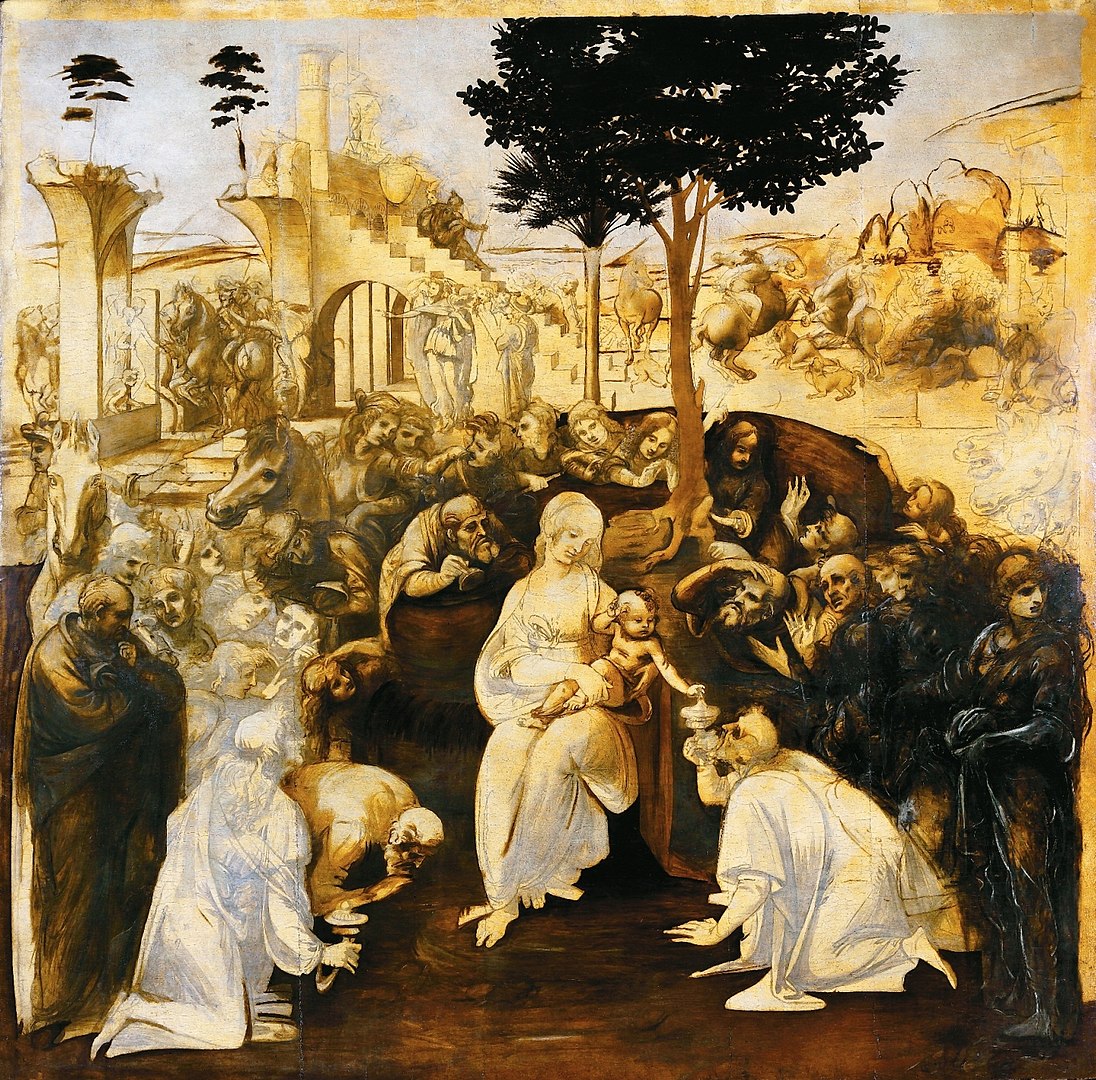
Adoration of the Three Eastern Doctors, 1481, Uffizi Gallery, Florence
Leonardo lived in the Duchy of Milan from 1482 to 1499. The National Gallery in London now owns The Madonna of the Grotto, commissioned by the Congregation of the Immaculate Conception, and the famous Last Supper (1495-1498), a wall painting in the Abbey of Santa Maria delle Grazie, were also painted during his stay in the Duchy of Milan.
.jpg)
The Virgin of the Grottoes 1483 - 1486
_-_The_Last_Supper_(1495-1498).jpg)
The Last Supper, 1495 - 1498, Convent of Santa Maria delle Grazie, Milan
During this period of maturity, Leonardo also created a huge equestrian statue of Francesco Sforza, the first Duke of Milan. It is said that Michelangelo, Leonardo's competitor, disliked Leonardo and insulted him, saying that Leonardo could not possibly be capable of such a large work. Seventeen tons of bronze was prepared for the equestrian statue, but later, in November 1494, the bronze was diverted to materials for cannons to defend against the invasion of Milan by King Charles VIII of France.
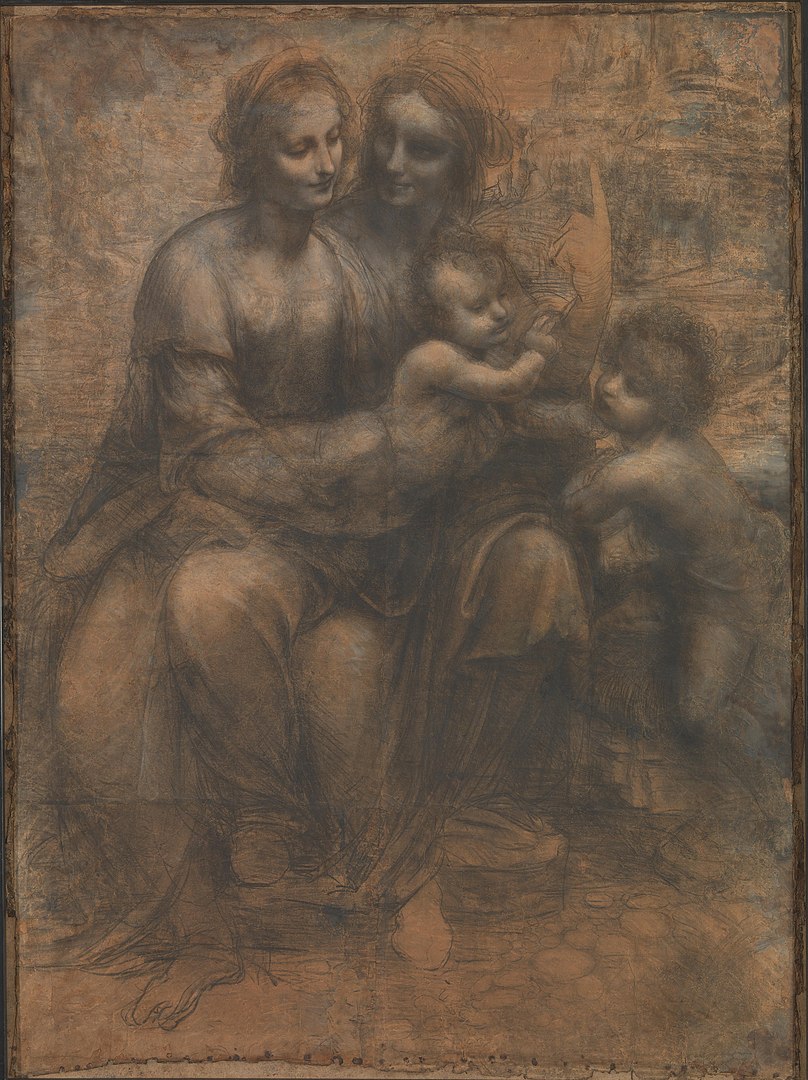
St. Anne with the Virgin and Child and St. John the Infant, ca. 1499 - 1500 or 1506 - 1508|National Gallery, London
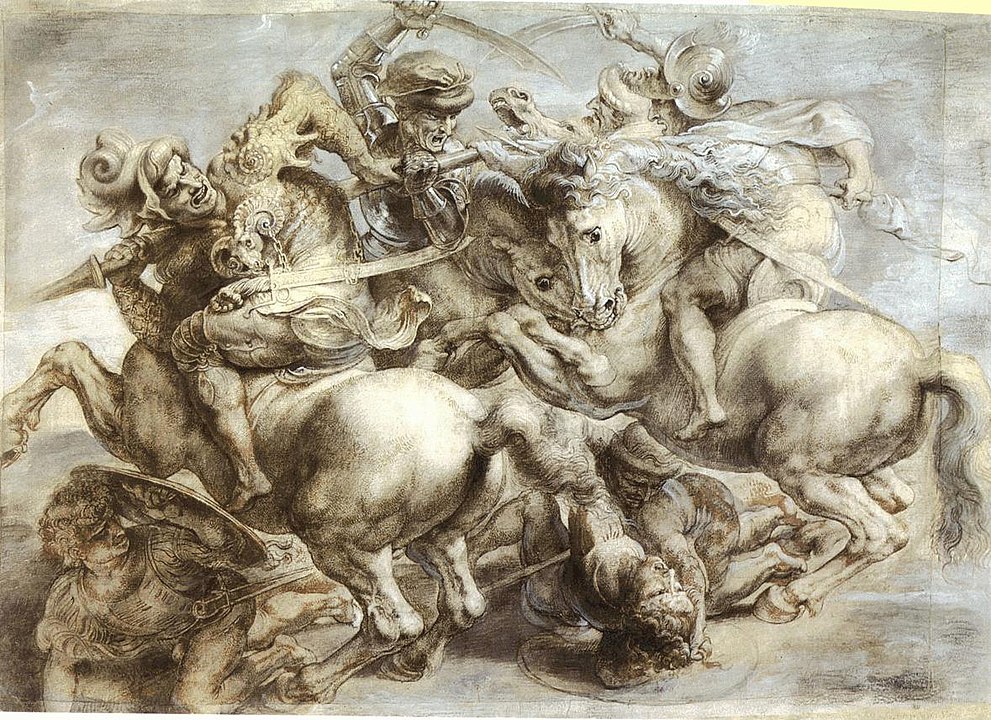
Reproduction of "The Battle of Anghiari" by Rubens
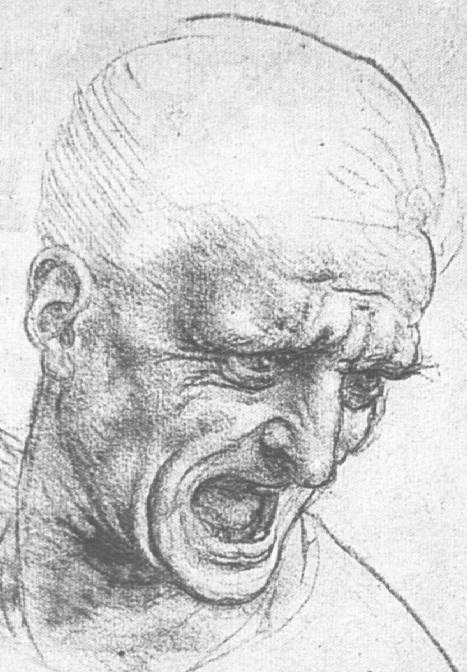
Sketch for "The Battle of Anghiari" by Leonardo
Late Period|1513 - 1519
Leonardo was invited by François I in 1516 and given a house in Creux near the Château d'Amboise, the residence of François I. Leonardo remained there until his death. Leonardo spent the last three years of his life with his pupils and friends until his death. Leonardo's annuities from François I totaled 10,000 scudes until his death.
Leonardo's Circumstances
At the time of Leonardo's youth, Florence was the center of thought and culture in Renaissance humanism. Leonardo was apprenticed to Verrocchio in 1466, the same year that Verrocchio's teacher, the great sculptor Donatello, died. Paolo Uccello, who was the first to introduce perspective into his paintings and contributed greatly to the development of landscape painting, was already in his old age.
Masaccio's Expulsion from Paradise (c. 1425, Brancacci Chapel wall painting) is a powerfully sculpted depiction of a naked and distraught Adam and Eve. The three-dimensional depiction of the figures in "The Expulsion from Paradise" using contrasts of light and shade greatly influenced Leonardo, who would go on to develop this three-dimensional depiction in his own works.
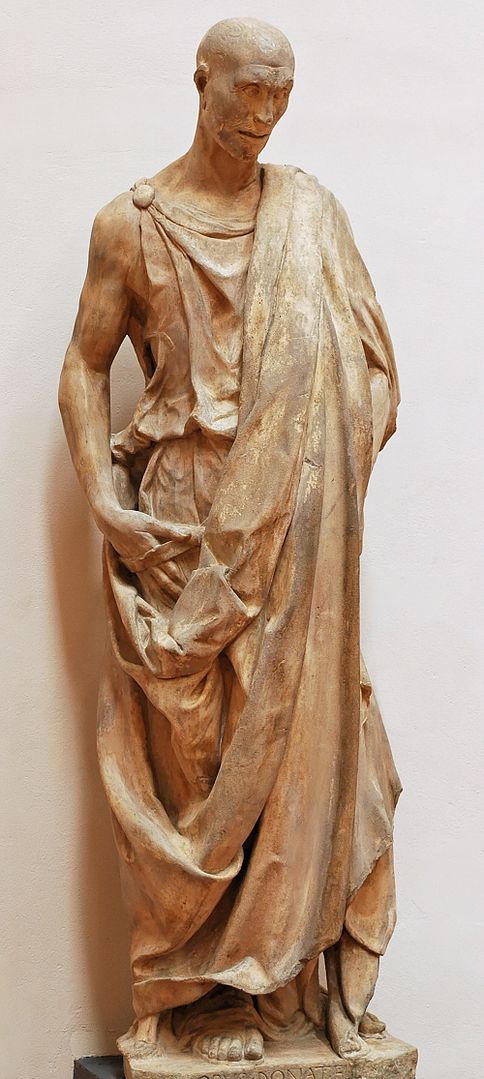
Donatello|The Prophet Habakkuk 1423 - 1425|Museum attached to the Duomo, Basilica di Santa Maria del Fiore
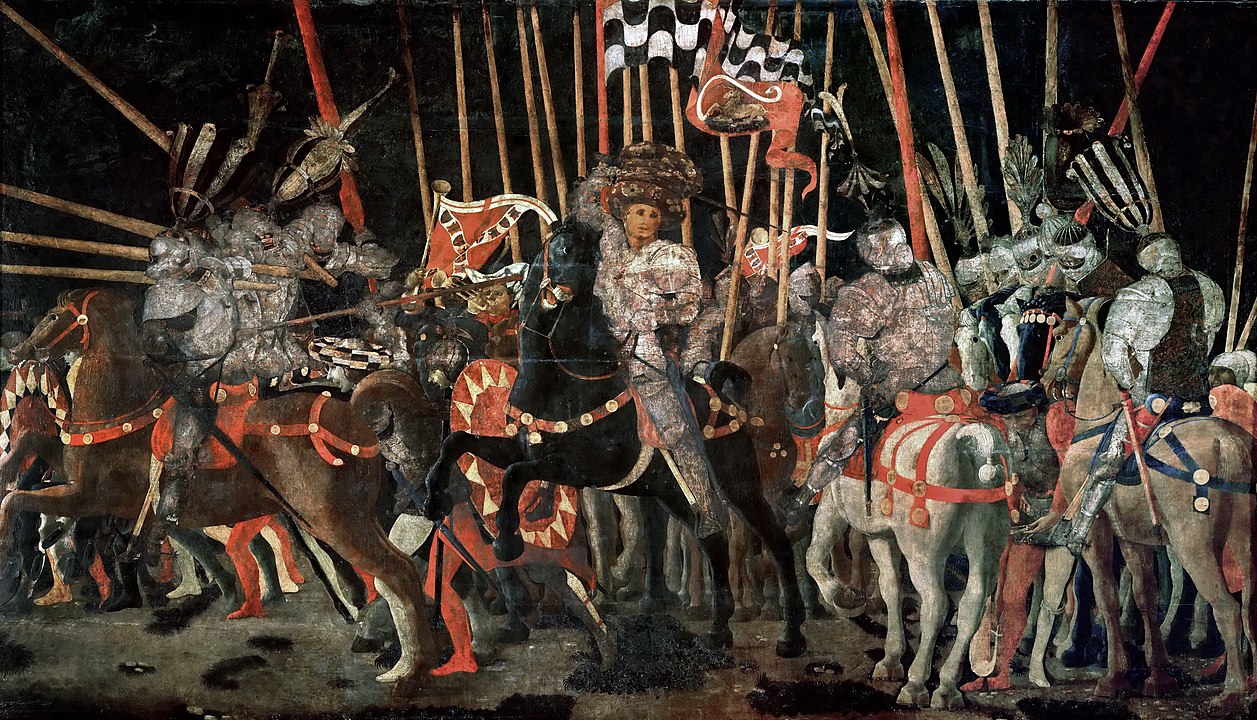
Paolo Uccello|Battle of San Romano

Masaccio, Expulsion from Paradise (before restoration on the left, after restoration on the right), c. 1425
Leonardo is a contemporary of Botticelli ( c. 1445 - 1510), Ghirlandaio ( 1449 - 1494), and Perugino ( c. 1450 - 1523), who is only slightly younger. Leonardo met these three as apprentices in Verrocchio's workshop and went to the Academy of Plato, which was presided over by the Medici family.
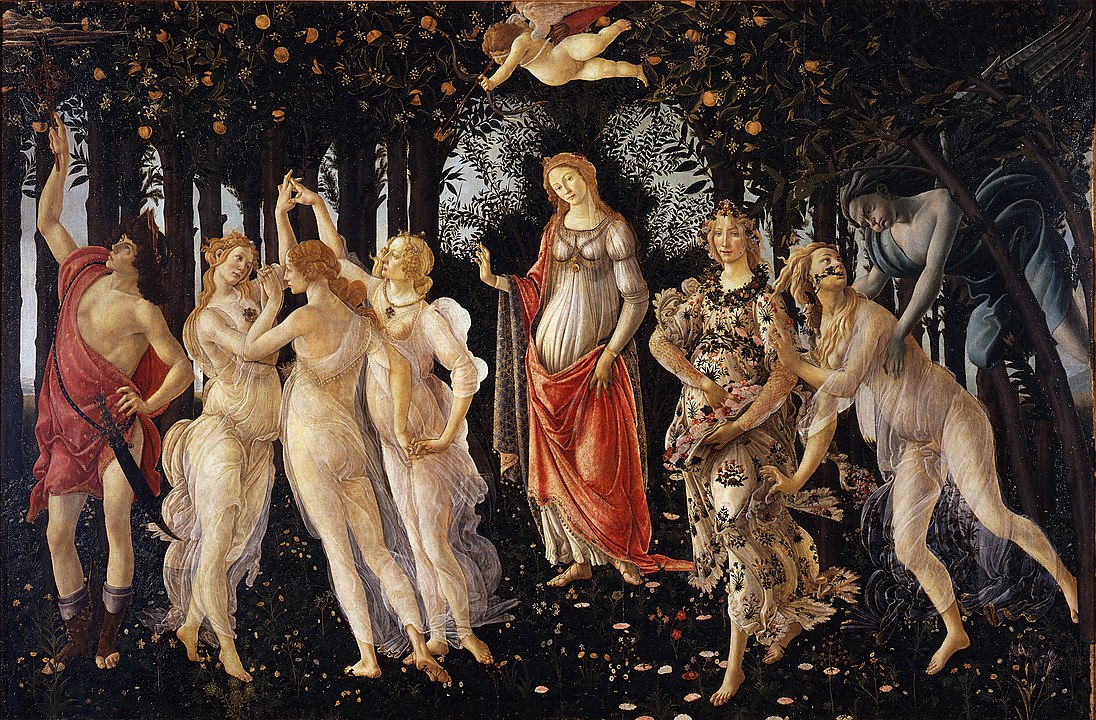
Sandro Botticelli, Primavera, c. 1477 - 1478
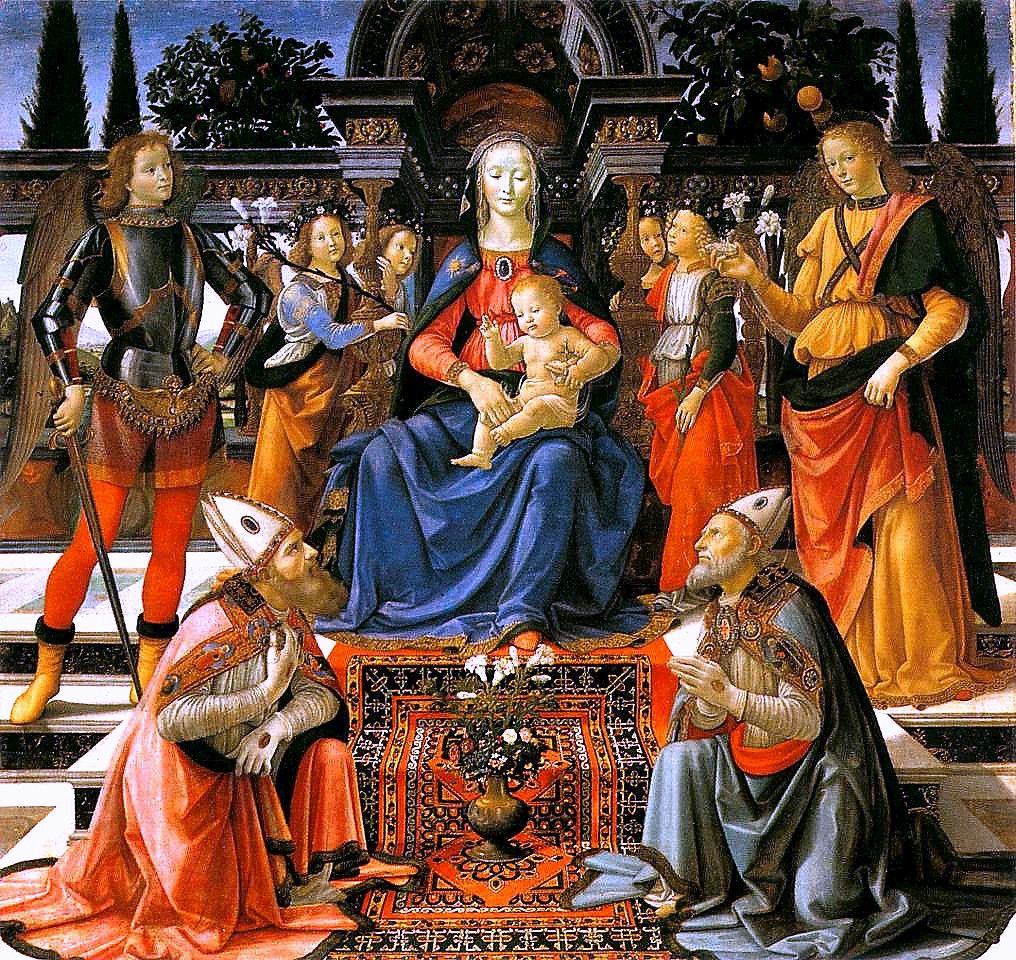
Domenico Ghirlandaio, The Madonna and Child adored by St Zenobius and St Justus, c. 1483
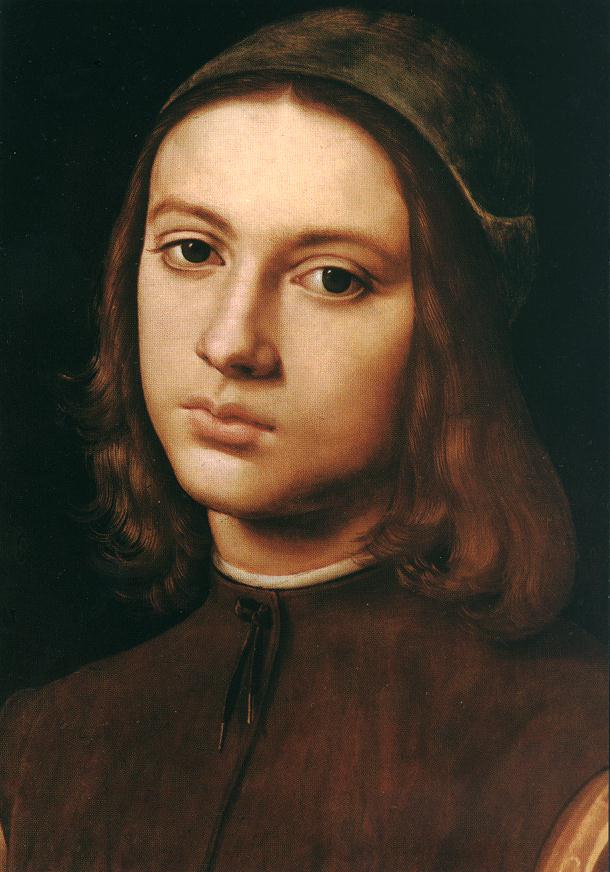
Perugino, Portrait of a Boy, 1495
Leonardo's representative works
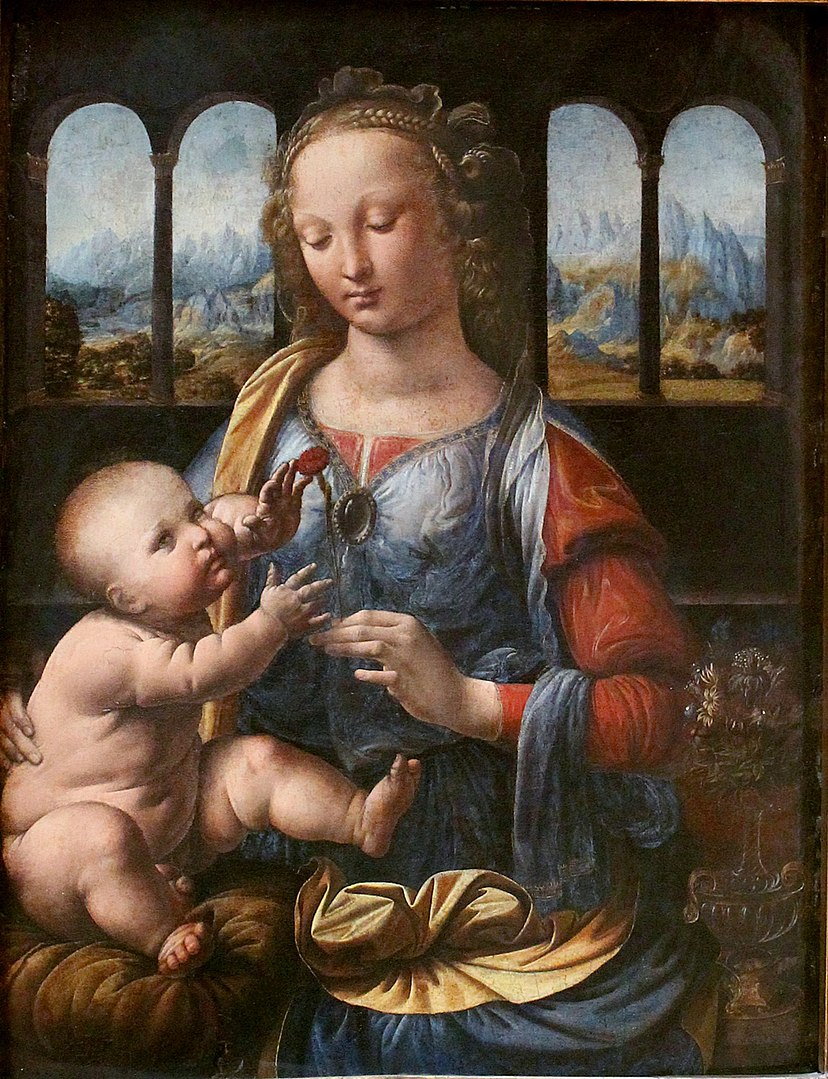
The Virgin of the Carnations, 1478-1480, Alte Pinakothek, Munich
_(cropped).jpg)
Annunciation c. 1472 1475
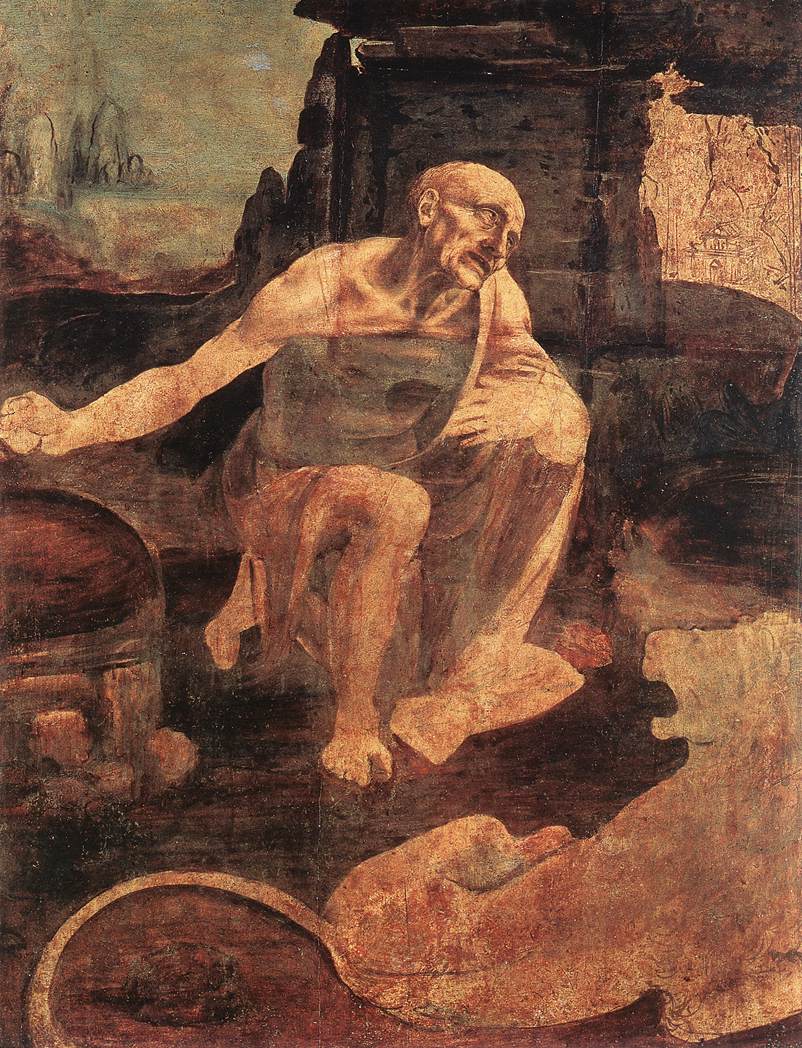
St. Hieronymus in the Wilderness c. 1480
.jpg)
The Virgin of the Grottoes 1483-1486

Mona Lisa 1503 - 1507
.png)
The Virgin and Child with St. Anne c. 1510
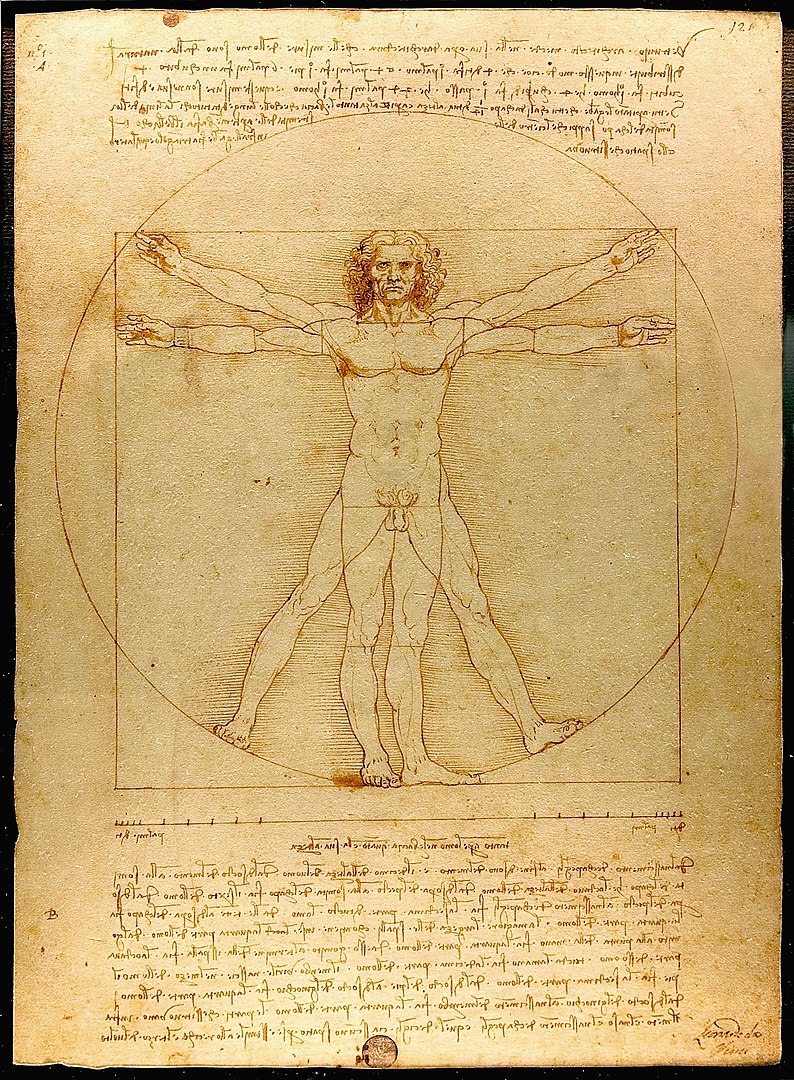
Vitruvian Figure of the Human Body c. 1485, Accademia Gallery, Venice
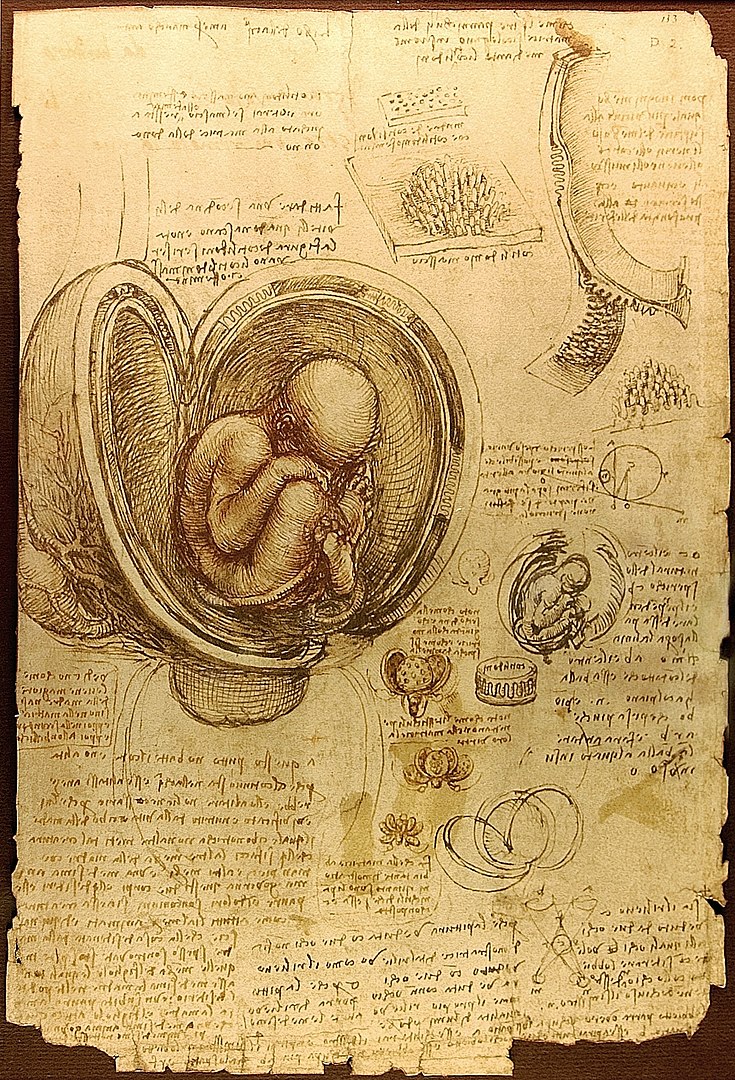
Manuscript depicting a fetus in the womb, c. 1510, Royal Collection (Windsor Castle)
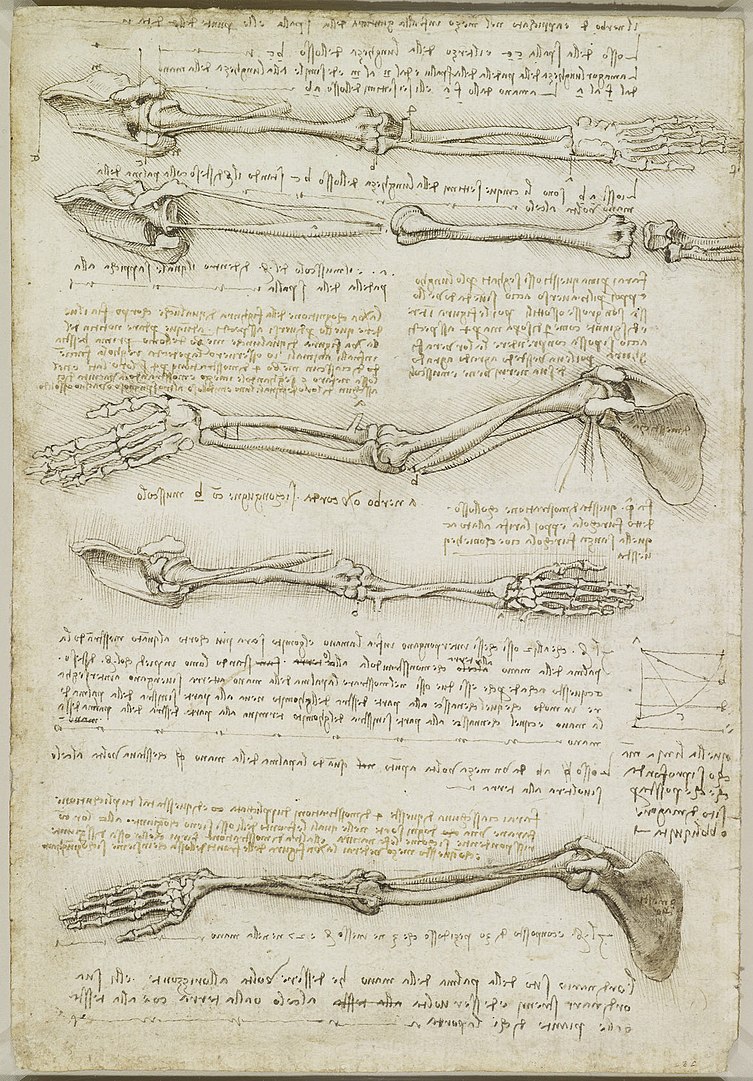
Manuscript of a study of an arm skeleton c. 1510
References